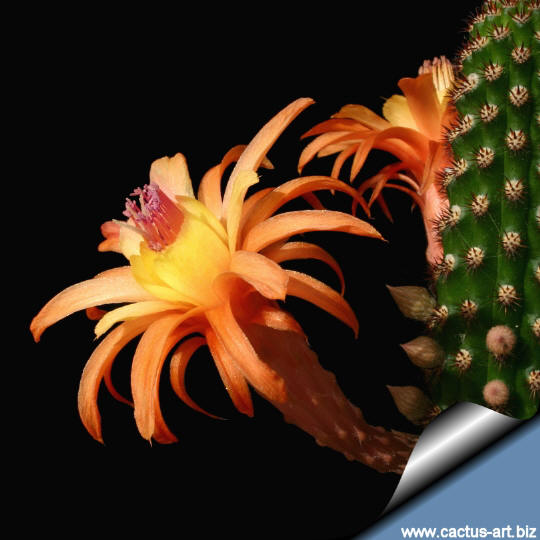|

Cultivation:
These plants are summer growers species that offer no
cultivation difficulties. Grow them in rich, airy, porous, growing
medium which mainly consists of non organic material such us clay,
pumice, lava grit, and only a little peat or leaf-mould. If potted,
repot preferably in the spring, if their roots become cramped.
Generally, they should be repotted every other year in order to provide
fresh soil. However, this doesn't necessarily mean they'll need larger
containers. Fill about a quarter of the pot with broken crocks, gravel,
etc. to promote good drainage. After repotting, do not water for a week
or more. Water regularly in summer (but do not overwater), and let their
soil dry out between waterings, keep rather dry in winter. No water
should ever be allowed to stand around the roots. Feed with a high
potassium fertilizer in summer.
Exposure: Outside they need a bright exposure,
full sun or half shade in summer if the location is exceedingly hot or
bright, inside needs bright light, and some direct sun.
It can tolerate moderate shade, and a plant that has been growing in
shade should be slowly hardened off before placing it in full sun as the
plant will be severely scorched if moved too suddenly from shade into
sun.
Frost Tolerance: Light frost protection required for
safe cultivation, but many
of the hybrids are relatively frost resistant if kept dry (Down to -5°C
or less depending on clone).
This plants need a period of cool rest in winter to produce flowers
abundantly. They flower freely indoors if conditions suit them.
Watch for infestations of
mealybug, scale insects and spider mite.
Propagation: Easy to propagate from
cuttings. The Hildewintera clones branches profusely and can be reproduced exclusively by
cuttings. The cuttings will take root in a minimum
temperature of 20° C. Cuttings of healthy shoots can be taken in the
spring and summer, Cut them with a sharp, sterile knife, leave the
cutting in a warm, dry place for a week or weeks (depending on how thick
the cutting is) until a callus forms over the wound. Once the callus
forms, the cutting may be inserted in a container filled with firmed
cactus potting mix topped with a surface layer of coarse grit. They
should be placed in the coarse grit only; this prevents the cut end from
becoming too wet and allows the roots to penetrate the rich compost
underneath, they root easily with no further assistance. Just let
them lay on the soil and you have a new start. The
cuttings should root in 2 to 6 weeks.
|